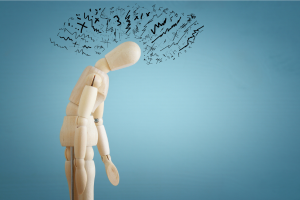Panic Attacks: What You Need to Know
 In my work as a clinical psychologist, I love when I get contacted by someone who wants therapy for anxiety. From OCD to phobias, I know that there are things that I can tell them in our first meeting that will help them to start to overcome a condition that, for many people, is excruciating and debilitating. Additionally, there is a clear path that we can walk together in therapy, that can lead them toward greater freedom, peace, and wellbeing.
In my work as a clinical psychologist, I love when I get contacted by someone who wants therapy for anxiety. From OCD to phobias, I know that there are things that I can tell them in our first meeting that will help them to start to overcome a condition that, for many people, is excruciating and debilitating. Additionally, there is a clear path that we can walk together in therapy, that can lead them toward greater freedom, peace, and wellbeing.
I am even more excited when someone who is experiencing panic attacks reaches out to me for help, because most of the people who have walked into my office with panic attacks don’t have additional attacks once they walk out. For the people who continue to have a few more attacks, these decrease in frequency as the therapy progresses and ultimately stop. I cannot overstate how gratifying it is to provide the information and coaching necessary to help someone to stop having panic attacks.
Panic attacks are an incredibly overwhelming and painful experience emotionally and physiologically. People who have panic attacks often believe that they are having a heart attack or that they are dying, as their body and mind feels completely out of control. Additionally, panic attacks are common and about 1 in 4 people will have a panic attack at some point in their lives (Gardenswart and Craske, 2001). For many people, they will have one attack or a few and then, they will go away on their own, but for others, attacks become more frequent over time, and while the first one may have been triggered by a stressful event, subsequent attacks can feel like they are coming out of nowhere and can be completely unexpected, adding to the terror the person experiences. This terror often leads people to misunderstand what is happening to them (believing they are dying or going crazy).
To be able to help someone prevent these awful experiences from continuing after less than half an hour of talking feels magical. With a little bit of good information and a lot of courage, people can start to feel better right away. Here, I’ve divided some vital information about panic attacks into two sections: what you need to know about panic attacks and what to do if you don’t want to keep having panic attacks.
What You Need to Know About Panic Attacks
- Panic attacks are fairly common and are not dangerous.
As stated above, many people will have panic attacks in their lives, so they are common. Additionally, panic attacks are incredibly intense, but they don’t lead to the outcomes people sometimes fear when having attacks such as having a heart attack, dying, or going crazy. Many people who see me to treat their panic attacks have already visited the hospital or their doctor and received tests to rule out medical causes of their symptoms, so I can be confident in telling them that they aren’t going to die from having a panic attack even if it feels that way.
- Panic is your body’s natural reaction to extreme stress.
Panic is an evolutionarily evolved mechanism that is designed to help you survive life-threatening danger by triggering your fight/flight/freeze response. This can make you fight harder, run faster, or play dead when, for example, you are attacked by a large animal. In this situation, panic just might help you to survive. However, predation is a much lower threat in the modern world, and now panic attacks are often caused by a stressful event that is not life-threatening but is triggering this ancient survival mechanism. This is why I often refer to panic attacks as a false alarm.
- Panic attacks tend to last a short period of time and will never last forever.
Panic attacks are self-limiting as your body can’t maintain this incredibly high level of anxiety for very long. After 5-15 minutes panic attacks resolve on their own. This is important to know, because, often, people believe the panic attack ended as a result of them fleeing a situation that caused stress and that it would have lasted forever if they hadn’t fled. In reality, even if people remain in an anxiety producing situation, their panic symptoms will rapidly subside.
- You are not going to die, faint, “go crazy,” or lose control of your body when you have a panic attack.
People don’t die from panic attacks and don’t go crazy from having panic attacks. As stated above, panic is an evolved mechanism that is designed to help you survive dangerous situations.
- Panic attacks continue to cause problems if you are afraid of having more panic attacks and change your behavior to try to avoid having additional panic attacks.
Examples of behavior change include stopping going out in public, because you are afraid you will have a panic attack and not exercising, because it makes your heart race and causes fear of having an additional attack. Fear and avoidance (of situations or physiological reactions) communicate to your body that you are in danger and that you are only safe because of avoidance. This leads to a cycle of increasing panic attacks and avoidance.
- When people have panic attacks, they tend to pay more attention to physiological symptoms (such as heart rate), and this tends to increase the likelihood of having additional panic attacks.
Monitoring heart rate or other panic symptoms throughout the day communicates to your body that you are still in danger and increases the likelihood of additional attacks. Many people who have panic attacks have the experience of additional attacks being triggered by body monitoring, as they begin to fear even subtle changes in their physiology such as increased heart rate.
What to Do if You Don’t Want to Keep Having Panic Attacks
- Challenge fearful thoughts about panic attacks.
If you are not afraid of panic attacks, they are much less likely to continue or cause problems in your life. Using the information presented above, you can challenge fears, such as the fear that you’re having a heart attack, and instead, correctly identify panic for what it is, a false alarm of your survival mechanism.
- Avoid avoidance.
In other words, don’t do anything different because you have had panic attacks. Don’t avoid activities, places, or people because you have had a panic attack. Do the things that scare you as long as they aren’t harmful or dangerous. This will keep your panic in check and will lead your body and mind to recalibrate. You being brave and confronting situations that cause anxiety communicates a sense of safety and exploration that is an effective way to overcome panic. If you can, cultivate a mindset of “bring it on” in relation to anxiety and your panic symptoms and boldly challenge yourself to approach situations that you used to fear. When you are able to get into this mindset of bravery and curiosity, panic symptoms evaporate quickly.
- Get out of the habit of monitoring physiological symptoms such as heart rate.
If you notice yourself doing this, direct your attention externally by silently describing the world around you. Imagine that you are talking to someone on the phone and trying to paint them a mental image of what you are seeing. Use words to describe colors, patterns, textures, and other aspects of what you are seeing, as this mental activity is incompatible with internal monitoring and will help you to get out of the habit of excessive monitoring of your physiology.
While this article presents information about panic and some tools for overcoming panic attacks, I strongly encourage anyone who has panic attacks to seek out a psychologist who specializes in treating anxiety and panic. I also encourage anyone who believes they might be having symptoms of a health condition to seek medical treatment first and foremost. If you’re interested in learning more, I also invite you to join me for a Webinar on “How to Outsmart Panic Attacks.” Clinicians can get CE’s and learn to help people to overcome panic by taking the Webinar. The information that I present in this article is largely drawn from a treatment protocol for early intervention to prevent panic disorder developed by Bonnie Zucker, Ph.D. Thanks Bonnie for what you have taught me and all of the people you have helped to live a life free from panic and anxiety.
References and Further Reading
- Craske, M.G., Stein, M.B., Roy-Byrne, P., Golinelli, D., Bystritsky, A., & Sherbourne, C. (2005). Does cognitive behavioral therapy improve panic disorder treatment outcome relative to medication alone in the primary care setting? Psychological Medicine, 35, 1645-1654.
- Gardenswartz, C.A., & Craske, M.G. (2001). Prevention of panic disorder. Behavior Therapy, 32, 725-738. Tsao, J.C.I., Mystkowski, J., Zucker, B., & Craske, M.G. (2002). Effects of cognitive behavioral therapy for panic disorder on comorbid conditions: replication and extension. Behavior Therapy, 33, 493- 509.
- Otto, M.W., Pollack, M.H,& Maki, K.M. (2000). Empirically supported treatments for panic disorder: costs, benefits, and stepped care. The Journal of Consulting and Clinical Psychology, 68, 556-563.
- Roy-Byrne, P., Veitengruber, J.P., Bystritsky, A., Edlund, M.J., Sullivan, G., Craske, M.G., Welch, S., & Stein, M.B. (2009). Brief intervention for anxiety in primary care patients. Journal of the American Board of Family Medicine, 22, 175-186
- Westen, D. & Morrison, K. (2001). A multidimensional meta-analysis of treatments for depression, panic, and generalized anxiety disorder: an empirical examination of the status of empirically supported therapies. The Journal of Consulting and Clinical Psychology, 69, 875-899.
- Jonge, P. , Roest, A. M., Lim, C. C., Florescu, S. E., Bromet, E. J., Stein, D. J., Harris, M. , Nakov, V. , Caldas‐de‐Almeida, J. M., Levinson, D. , Al‐Hamzawi, A. O., Haro, J. M., Viana, M. C., Borges, G. , O’Neill, S. , Girolamo, G. , Demyttenaere, K. , Gureje, O. , Iwata, N. , Lee, S. , Hu, C. , Karam, A. , Moskalewicz, J. , Kovess‐Masfety, V. , Navarro‐Mateu, F. , Browne, M. O., Piazza, M. , Posada‐Villa, J. , Torres, Y. , ten Have, M. L., Kessler, R. C. and Scott, K. M. (2016), Cross‐national epidemiology of panic disorder and panic attacks in the world mental health surveys. Depress Anxiety, 33: 1155-1177. doi:10.1002/da.22572
- Brown, L. A., Lebeau, R., Liao, B., Niles, A. N., Glenn, D., & Craske, M. G. (2016). A comparison of the nature and correlates of panic attacks in the context of Panic Disorder and Social Anxiety Disorder. Psychiatry Research, 235, 69-76. doi:10.1016/j.psychres.2015.11.048
- Cackovic C, Adigun R. Panic Disorder (Attack) [Updated 2017 May 23]. In: StatPearls [Internet]. Treasure Island (FL): StatPearls Publishing; 2018 Jan-. http://europepmc.org/books/NBK430973;jsessionid=C1F4C5CFBCD4020DCA4C1E59F53BFAC1
- Hearld, K. R., Budhwani, H., & Chavez-Yenter, D. (2015). Panic attacks in minority Americans: The effects of alcohol abuse, tobacco smoking, and discrimination. Journal of Affective Disorders, 174, 106-112. doi:10.1016/j.jad.2014.11.041
- Asselmann, E., Wittchen, H., Lieb, R., Höfler, M., & Beesdo-Baum, K. (2014). Associations of fearful spells and panic attacks with incident anxiety, depressive, and substance use disorders: A 10-year prospective-longitudinal community study of adolescents and young adults. Journal of Psychiatric Research, 55, 8-14. doi:10.1016/j.jpsychires.2014.04.001 6: https://www.frontiersin.org/articles/10.3389/fpsyg.2015.01150/full
- Pappens, M., Vandenbossche, E., Bergh, O. V., & Diest, I. V. (2015). Interoceptive fear learning to mild breathlessness as a laboratory model for unexpected panic attacks. Frontiers in Psychology, 6. doi:10.3389/fpsyg.2015.01150
- Yoris, A., Esteves, S., Couto, B., Melloni, M., Kichic, R., Cetkovich, M., . . . Sedeño, L. (2015). The roles of interoceptive sensitivity and metacognitive interoception in panic. Behavioral and Brain Functions,11(1). doi:10.1186/s12993-015-0058-8
- Craske, M. G. (2003). Origins of phobias and anxiety disorders: Why more women than men?Amsterdam: Elsevier.
Tags: anxiety










Leave a Reply
You must be logged in to post a comment.